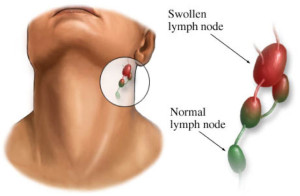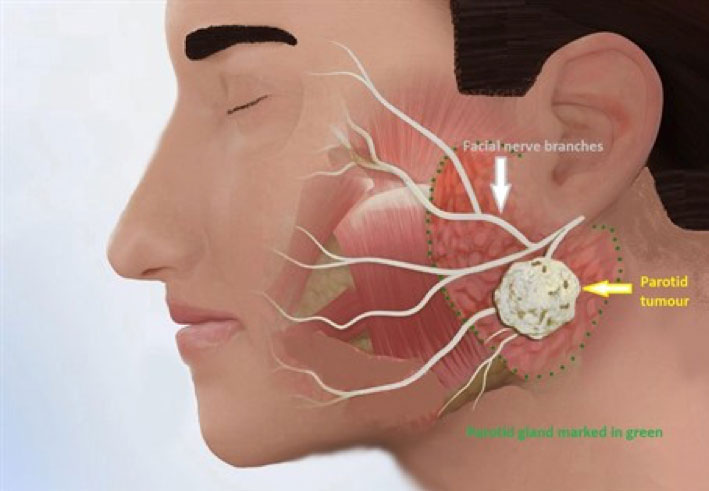Head & Neck Surgery
The head and neck region houses some of the most complex anatomy in the human body that is involved in all of our daily activities. This region includes all structures from the skull base to the clavicle. For example the key organs that allow us to hear, see, communicate, breathe, swallow, smell and taste are all located in this region. As such, the head and neck surgeon needs to have an extensive knowledge of the anatomy and function of various structures in this region but also to have the skill and training to treat these disorders while cognizant of cosmesis and function.

Excision of Benign Tumors
Various benign tumors or masses can arise in the head and neck region ranging from superficial skin lesions such as cysts or skin tags to deeper more infiltrating masses like lipomas and branchial cleft cysts. These tumors can often times be close to various critical vessels and nerves and as such require careful removal by top head and neck surgeons. Our surgeons at C/V Surgical Group in West Hills go to great lengths to formulate and execute an appropriate surgical plan to remove these tumors with minimal risk to any critical structures. They also always strive to make the smallest incision possible that can provide safe removal with minimal cosmetic deformity.
Excision of Malignant Tumors
Malignant tumors do arise in the head and neck region and depending on the pathology various surgical procedures are indicated ranging from simple biopsy to radical excision of these tumors with adequate margins. Our renowned head and neck surgeons have extensive experience with the proper workup and treatment of these various malignancies and will guide you through every step of the process in order to provide you with the best chance for cure. Function and cosmesis are paramount in their decision-making in the management of these malignancies. The office is located in the West Hills/Calabasas region of the San Fernando Valley but serves the greater Los Angeles and Thousand Oaks area and often times people will fly in for their expertise.
Excision of Skin Cancers
Skin cancer is a disease in which cancer (malignant) cells are found in the outer layers of your skin. There are several types of cancer that originate in the skin. The most common types are basal cell carcinoma (70 percent of all skin cancers) and squamous cell carcinoma (20 percent). These types are classified as nonmelanoma skin cancer. Melanoma (five percent of all skin cancers) is the third type of skin cancer. It is less common than basal cell or squamous cell carcinoma, but potentially much more serious. Other types of skin cancer are rare.
When skin cancers arise on you face or neck regions you should trust your face only to a facial plastic surgeon not only to resect the cancer but also for reconstruction of the defect so that you wont be left with a significant cosmetic deformity. Our specialists at C/V ENT Surgical Group, which serves the greater Los Angeles area, have particular experience in the management of skin cancers and melanoma of the face and neck region. Also at times these cancers may have predilection for local metastasis to lymph nodes in the region and they will address the metastatic deposits adequately with parotidectomy or neck dissection. In the treatment of melanoma often sentinel lymph node biopsy is also employed for proper staging.
Head and Neck Cancer Surgery

This workup may include imaging studies such as ultrasound, CT or MRI as well as biopsy. Based on the workup, then a discussion will be had between you and one of our renowned surgeons, at C/V ENT Surgical Group in Los Angeles, to decide the best course of treatment. This decision is made after discussion of all the options available including radiation therapy, chemotherapy and surgery.
Neck Dissection
A neck dissection is a surgical procedure where the lymph nodes that are draining a particular cancer (malignancy) are removed partially or in totality for therapeutic and staging purposes. There are multiple different subdivision to the neck anatomy resulting in 6 levels of lymph nodes that can be potentially harboring metastasis. Accordingly procedures such as radical, modified-radical, selective, lateral neck compartment and central neck compartment neck dissection are utilized to specify the type and extent of surgery that will be done for a particular head and neck cancer. These procedures are often done in the hospital setting and require an overnight stay usually. Each type of head and neck cancer has a predilection towards certain neck compartments and after review of your workup, a decision is made by one of surgeons as to what levels will be included in your neck dissection if necessary.
Neck Mass Excision
Neck masses can present often times in both the adult and pediatric population. If a mass in the neck is present for more than 2 to 3 weeks and is larger than the size of your fingertip, then an evaluation by a Head & Neck Surgeon is warranted. These masses are often times benign in nature but an evaluation is always warranted. This evaluation may be followed by an imaging study such as an ultrasound, CT or MRI to determine the exact size and location of the neck mass.
If the imaging study shows a mass that is greater than a certain size, then further procedures such as surgical excision of the mass or needle biopsy may be indicated. If surgery is warranted, then our surgeons in West Hills/Calabasas, have extensive experience in the proper excision of these neck masses while being mindful of function and cosmesis. Remember that the neck houses many critical nerve and vascular structures and only a head and neck surgeon has the proper training to adequately minimize trauma these structures while successfully removing the mass.
Parotid Surgery
The parotid gland is one of our major salivary glands and resides on the side of the face just in front of the ear. The gland is divided into a superficial lobe and deep lobe by the facial nerve. The facial nerve is a major cranial nerve that comes out of the skull base from the brain just below and in front of our ear lobe. It divides into multiple branches after exiting the skull base and controls all of our facial muscles that make us 
Parotid surgery is a very delicate and skillfully demanding procedure where the tumor needs to be removed in it’s entirety while preserving the facial nerve and it’s various branches. As such you will want to have this procedure performed by a surgeon who does more than 10-20 of these procedures annually. Our board certified head and neck surgeons routinely perform parotid surgery in Los Angeles and Thousand Oaks to remove benign and malignant parotid masses. They are very mindful of cosmesis during this procedure and often times will utilize a hidden facelift or modified facelift incision to remove the tumor. In many patients they utilize a minimally invasive facelift incision for removal of the parotid mass. They are also one of a handful of surgeons who routinely use intraoperative facial nerve monitoring to monitor the nerve during dissection of the tumor so as to minimize injury to the nerve. Lastly, our surgeons with their extensive facial plastics experience, will often utilize a muscle flap to cover the defect after a parotidectomy so that you are not left with a large and hideous indentation on the side of your face.
Salivary Gland Surgery
The major salivary glands are the parotid glands, submandibular glands and the sublingual glands. There also hundreds of minor salivary glands in our mouths along the lips, tongue, inner cheeks and palate that produce saliva. Pathology can arise in any of these glands in the forms of cysts, stones, infection/inflammation and tumors (benign or malignant).
If any of these problems arise then evaluation and treatment by a head and neck surgeon is critical. Simple in-office procedure such as stone removal or duct dilation may be all that is necessary to treat the problem.
However if a mass is noted in these glands then a workup will be indicated including an MRI and fine needle aspiration biopsy. Once this is completed then often surgery is required to properly remove the mass in it’s entirety while sparing critical nearby structures like important nerves. Our renowned head and neck surgeons at C/V ENT Surgical Group in Calabasas, are experts in the medical and surgical treatment of various salivary gland disorders so you can rest assured in their hands.
Tongue and Oral Cavity Surgery
The oral cavity includes the lips, tongue, palate, floor of mouth, tonsils and inner cheek linings (aka = buccal mucosa). The tongue is divided into an anterior (front) 2/3 and posterior (back) 1/3. Various pathology in the forms of cysts, ulcers, infection, inflammation and tumors can arise in these areas. If any of these problems does not resolve after 2-3 weeks then evaluation by a ear, nose and throat surgeon is prudent. The board-certified surgeons at C/V ENT Surgical Group in the San Fernando Valley are well-trained in order to diagnose and treat these problems accurately.
Reconstructive Head and Neck Surgery
Our renowned head & neck surgeons as well as facial plastic surgeons at C/V ENT Surgical Group which serves the greater Los Angeles and Thousand Oaks areas, utilize their combined experience daily to not only remove various masses and tumors in the head and neck region but also to reconstruct any defects that may be left behind to minimize any cosmetic deformity that the patient may have to endure. Especially when large skin cancers have to be removed in these critical areas, various small and large neighboring skin flaps or distant skin grafts may have to be utilized to adequately cover the defects in a cosmetically acceptable fashion.
